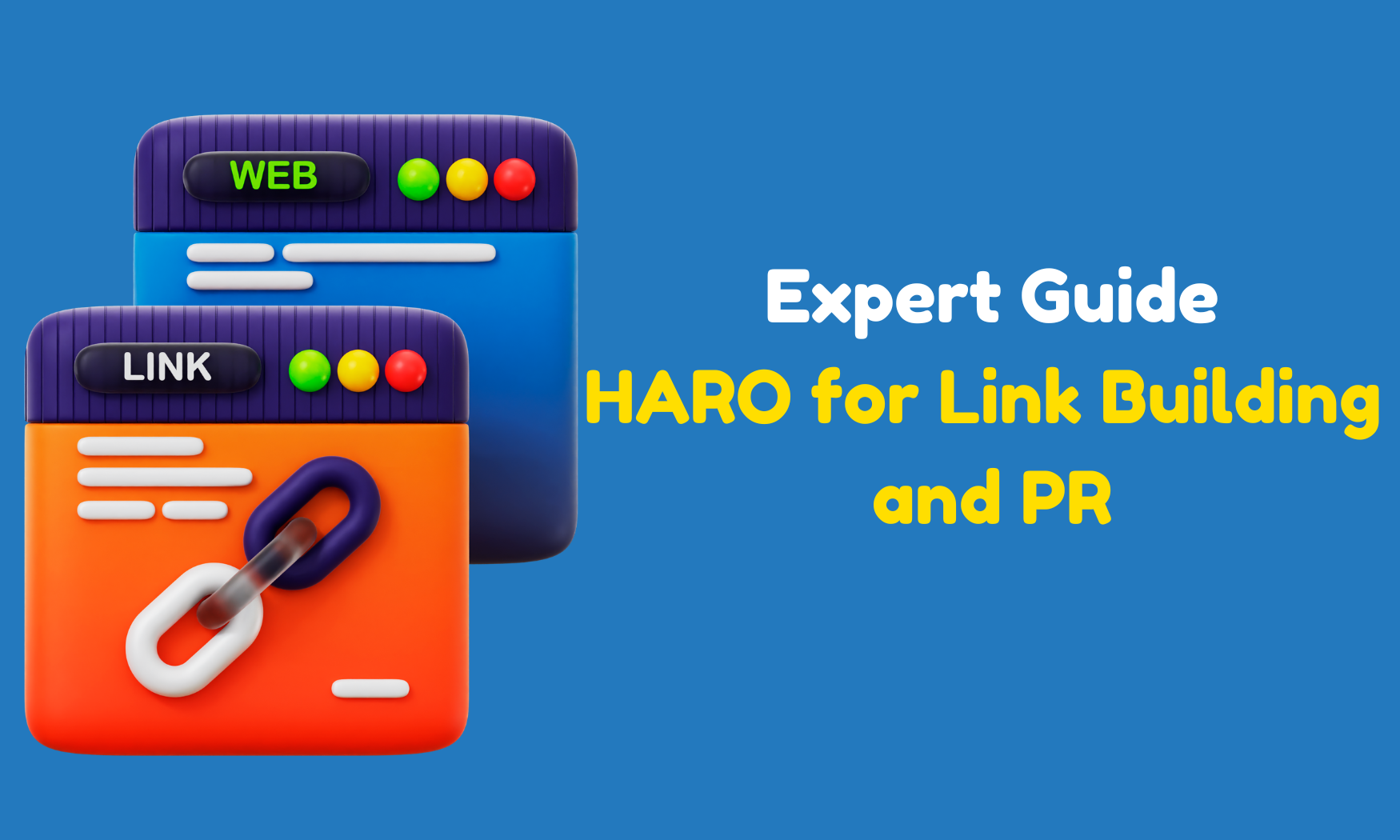How to Use HARO for Link Building and PR: A Complete Guide
In the world of SEO and public relations, HARO (Help a Reporter Out) is a game-changer. This free platform connects journalists with sources, making it an invaluable tool for link building and PR. By responding to relevant queries, you can earn backlinks from high-authority news websites, boost your online visibility, and establish your brand as an industry expert.
However, success with HARO requires a strategic approach. In this guide, we’ll walk you through how to use HARO effectively for link building and PR, helping you maximize your results and grow your brand.
What is HARO and Why Does It Matter?
HARO, short for Help a Reporter Out, is a platform that allows journalists to source quotes, insights, and expertise from industry professionals. For businesses and marketers, HARO offers a unique opportunity to:
- Earn backlinks from authoritative websites.
- Gain media coverage and increase brand visibility.
- Establish credibility and thought leadership in your industry.
With over 55,000 journalists and 1.5 million sources using HARO, it’s a powerful tool for both link building and PR.
How to Use HARO for Link Building and PR
1. Sign Up and Set Up Your Profile
To get started with HARO, sign up as a source at helpareporter.com. Once registered, complete your profile with:
- Your name, job title, and company.
- A professional photo.
- A brief bio highlighting your expertise.
A well-crafted profile increases your chances of being selected by journalists.
2. Monitor HARO Queries Regularly
HARO sends out three emails daily—morning, afternoon, and evening—containing journalist queries. To maximize your opportunities:
- Check your inbox regularly for relevant queries.
- Use filters to sort queries by industry or keyword.
- Act quickly, as journalists often receive hundreds of responses.
3. Craft Compelling Pitches
Your pitch is your chance to stand out from the crowd. To create a compelling pitch:
- Be Concise: Keep your response short and to the point.
- Provide Value: Offer unique insights, data, or anecdotes.
- Include Credentials: Highlight your expertise and why you’re qualified to comment.
- Add a Link: Include a link to your website or relevant content when appropriate.
For example, if a journalist asks for tips on small business marketing, you could respond with:
“Hi [Journalist’s Name],
As a digital marketing consultant with 10 years of experience, I’d be happy to share insights on small business marketing. One effective strategy is leveraging local SEO to attract nearby customers. For example, [link to a case study or blog post on your website]. Let me know if you’d like more details!”
4. Focus on Relevant Queries
Not all HARO queries will be relevant to your expertise or goals. Focus on queries that:
- Align with your industry or niche.
- Offer opportunities for backlinks to your website.
- Allow you to showcase your expertise.
For example, a fitness coach should prioritize queries about health and wellness rather than unrelated topics like finance.
5. Build Relationships with Journalists
HARO isn’t just a one-time opportunity—it’s a chance to build long-term relationships with journalists. To foster these relationships:
- Deliver high-quality responses consistently.
- Follow up politely if you don’t hear back.
- Thank journalists for featuring you and share their articles on social media.
6. Leverage HARO for PR Opportunities
Beyond link building, HARO can help you gain media coverage and boost your brand’s visibility. To use HARO for PR:
- Respond to queries from major publications and news outlets.
- Share your expertise on trending topics or breaking news.
- Use media coverage to enhance your credibility and reach.
For example, if a journalist is writing about the latest trends in e-commerce, you could offer insights as an e-commerce expert and gain exposure in a major publication.
7. Track Your Results
To measure the success of your HARO efforts, track:
- The number of backlinks earned.
- The authority of websites linking to you.
- The amount of media coverage generated.
Use tools like Google Analytics, Ahrefs, or SEMrush to monitor your results and refine your strategy.
Tips for Success with HARO
- Be Patient: It may take time to see results, so don’t get discouraged.
- Stay Consistent: Respond to queries regularly to increase your chances of success.
- Focus on Quality: A few high-quality backlinks are more valuable than dozens of low-quality ones.
- Follow Guidelines: Always adhere to HARO’s rules and guidelines to maintain a good reputation.
Common Mistakes to Avoid
- Ignoring Relevance: Responding to unrelated queries wastes time and reduces your credibility.
- Sending Generic Pitches: Journalists can spot generic responses, so tailor your pitches to each query.
- Overloading with Links: Including too many links in your pitch can appear spammy.
- Giving Up Too Soon: Success with HARO requires persistence and consistency.
HARO is a powerful tool for link building and PR, offering small businesses and marketers the opportunity to earn high-quality backlinks and gain media coverage. By signing up, monitoring queries, crafting compelling pitches, and building relationships with journalists, you can maximize your results and grow your brand.
Remember, success with HARO takes time and effort. Stay consistent, focus on quality, and track your results to refine your strategy. With the right approach, HARO can become a cornerstone of your SEO and PR efforts.




